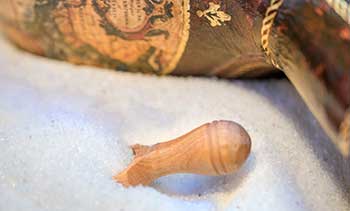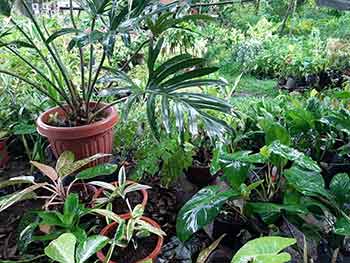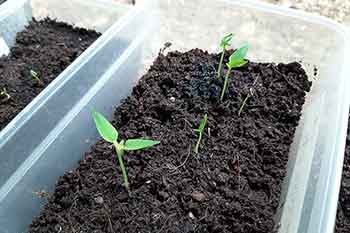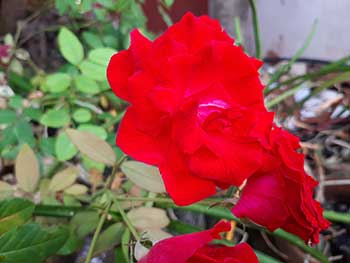For my houseplants, I like to keep them healthy using organic methods. In my other articles, I have discussed ways of making organic materials such as fruit peels, eggshells, and molasses, into effective fertilizers. I even wrote an article on how to properly use dead fish as a rich source of nitrogen. If you want to read about it, you can click this link.
One time, someone asked me about Epsom salt. Can you use Epsom salt on houseplants? Epsom salt is an organic source of magnesium sulfate. When applied properly to houseplants or potted plants, it makes the foliage greener and contributes to the overall growth development of the plants.
The magnesium content in the Epsom salt contributes greatly to the process of photosynthesis where the plants make their food. It does this by ensuring that the chlorophyll in the plants’ leaves captures the sun’s energy.
Is Epsom Salt Organic?

Epsom salt is nothing like your ordinary table salt. Its chemical name is magnesium sulfate and it is completely organic. The first time I heard about Epsom salt, I thought it was another synthetic fertilizer. Now I know it is a naturally-occurring earth mineral compound.
Here’s a trivia for you: Epsom salt is named for the English town in which it was discovered. Epsom salt was named for a bitter saline spring at Epsom in Surrey, England. It was obtained by boiling down the spring water.
Here are 8 ways Epsom salt can help keep your plants healthy.
- Epsom salt helps keep the foliage green
The leaves and stems of plants contain a green coloring or pigment called chlorophyll. Sometimes it is masked by other colors, such as reds and purples, but it is always there. It allows plants to trap the sun’s energy (photons) and use it in the photosynthesis process.

In photosynthesis, sugar is produced which is used as the plant’s energy source, while oxygen is released into the atmosphere. When the leaves look pale, Epsom salt may be able to make it greener.
- Epsom salt increases nutrient absorption
A typical houseplant has a root system, which supplies the plant with water and nutrients from the soil. These are drawn up the main stem, along the branches to leaves and flowers. Epsom salt helps the plants’ root system to absorb the nutrients available in the soil. Your soil may already have the micronutrients needed by the plants, and to help the plants absorb them, a little magnesium sulfate will surely improve nutrient absorption.
- Epsom salt improves seed germination
The cycle of growth for plants starts with a seed. This may be as small as a poppy seed or as large as a coconut, but the process is the same. Seeds need the right conditions-enough moisture and warmth-to trigger germination. This is when the seed swells and a shoot starts to grow.

This will keep on growing towards the light until it pops up above the earth. The process of germination also depends on the condition of the seeds. Sometimes, even having the right conditions, the seeds just won’t grow.
Epsom salt improves the germination rate of the seeds by strengthening the cell walls and providing the needed energy for the shoot to grow.
- Epsom salt prevents transfer shock
Ideally, once the seed grows, it should stay in its place. However, when we grow them, it might be possible to transfer the plants to another area of the garden. Or maybe, from a seed tray, we transfer them to their own pot or container.
Transfer shock happens when the plant gets stressed in its new environment. Sometimes, during the process of transferring or transplanting, we disturbed the roots. It is essential that we bring out most, if not all, of the roots when we transfer.

When plants suffer from transfer shock, their leaves may become yellow. Sometimes you will notice that they have stopped growing. Epsom salt can prevent this from happening.
- Epsom salt produces sweeter fruits and flavorful vegetables
Vegetables bring exciting flavors and textures to every meal. Even better, they are packed with vitamins, minerals, protective compounds, and fiber, all vital in a healthy diet. So it just makes sense that you are producing flavorful vegetables. Most vegetables also make fabulous salads which is great since they are served fresh.
Fruits also add food value and flavor. We can also get helpful phytonutrients or phytochemicals by eating fruits. They help defend our bodies from damaging effects brought about by the environment.
- Epsom salt prevents curly leaves
Curly leaves are common among pepper and tomato plants. This can be caused by a lot of things. First, pests could be eating your plant. Some pests may be sucking all the nutrients from the plants’ stems and leaves. Sometimes, it could be because of overwatering.
Avoid overwatering your plants. Check the soil first before watering. The soil may look dry on top but if dig into it, moisture may be accumulating. This all depends on the type of soil you have. On the other hand, you may not be watering your plants enough. It could also be that the temperature is too hot.
If you are sure there are no pests, or you are properly watering your plants, then consider applying Epsom salt.
- Epsom salt is a natural pest deterrent
Epsom salt can deter snails and slugs. These mollusks love to eat big ragged holes in delicate flowers, young leaves, and seedlings. They hide away during the daytime, so it could be quite difficult to catch them. Most salts, including Epsom salt, work by dehydrating the snails and slugs.
When they are dehydrated, they are no longer able to produce slime which allows them to move. Sprinkling a little amount of Epsom salt around the plant will stop them in their tracks.
- Epsom salt causes flowers to bloom
Magnesium encourages plants to flower. Colorful flowers are fun to have in your garden. They are great for decorating indoors and outdoors. Some flowers are edible while some smell like perfume. Others attract friendly insects, while others keep away mosquitos.

Roses particularly love magnesium. If you want blooming flowers in your garden, use Epsom salt.
How to Use Epsom Salt for Your Houseplants
For keeping snails and slugs away, just sprinkle Epsom salt around your plants.
Another way to apply the Epsom salt to your plants is to use it as a foliar fertilizer. Foliar feeding is when the fertilizer is applied directly to the leaves of a plant, usually through spraying. With foliar feeding, the nutrients are absorbed directly through the leaves of the plant.
The leaves absorb the nutrients through the stomata. It is best to spray the fertilizer in the early morning or late afternoon. This is when the plant’s stomata are open. To use it as a spray, you need to dilute it first in water. The proper ratio is 2 tablespoons of Epsom salt per 1 gallon (4 liters) of water.
Mix thoroughly before spraying. Spray once every two weeks.
References
Hendy, Jenny. 2011. Kid’s First Gardening Book. Lorenz Books, Anness Publishing Ltd
Reader’s Digest. Eat Yourself Healthy. Reader’s Digest Association Limited










